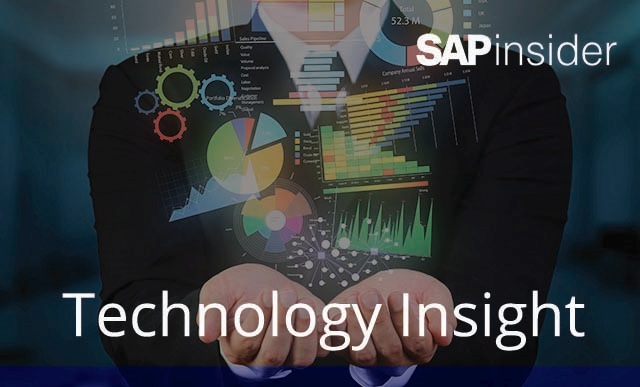Using Automation to Manage SAP Environments with IT-Conductor
Meet the Experts
Key Takeaways
⇨ Modern application environments have become increasingly challenging to manage as they migrate into distributed, hybrid, and multi-cloud environments.
⇨ SOAPs combine workflow orchestration, workload automation, and resource provisioning across an organization’s hybrid digital infrastructure.
⇨ Automated monitoring provides continuous insight into application health, allowing for more efficient troubleshooting.
Modern businesses run on a complex network of SAP applications that streamline operations and allow organizations to operate more efficiently. However, these application environments have become increasingly challenging to manage, mainly as they migrate into distributed, hybrid, or purely cloud-based environments.
As organizations transition to the cloud, they often encounter challenges stemming from the limitations of existing workload automation strategies. These existing strategies can struggle to adapt to the increasing complexity of workload types, volumes, and locations driven by evolving business demands across hybrid environments. Without any form of centralized control, companies face roadblocks to growth because resources are poorly utilized, application performance suffers, and scalability becomes stunted.
Also, the lack of collaboration and automation both within and outside of IT hampers digital business initiatives, fostering siloes of capabilities across business and IT teams. This fragmented approach slows digital innovation and obstructs the seamless integration of processes critical for organizational success.
One approach to addressing these challenges is with service orchestration and automation platforms (SOAPs). SOAPs combine workflow orchestration, workload automation, and resource provisioning across an organization’s hybrid digital infrastructure. These platforms ensure applications and workloads are deployed, configured, and maintained consistently throughout the business. The end-to-end orchestration capabilities offered by SOAPs provide greater control of resources which fosters application transparency and facilitates efficient cost optimization. This enables organizations to optimize their spending and maximize operational efficiency.
IT-Conductor’s software-as-a-service SOAP offering provides organizations with advanced observability into complex application environments so they can better monitor, manage, and orchestrate enterprise IT. As a cloud-based service, IT-Conductor does not require any monitoring infrastructure, except for a locally installed IT-Conductor Gateway (proxy-service) securely on the network. The platform is delivered as a full-service model, offering workflow orchestration, event-driven automation, real-time monitoring and alerting, resource provisioning and deployment, seamless integration with existing systems, and extensibility through API integrations.
Service Orchestration and Automation
The SOAP offering from IT-Conductor focuses on service orchestration, automation, and application performance management (APM). Users have a unified view of handling workflows across multiple applications as part of the platform’s workflow orchestration capabilities. Its event-driven automation capabilities provide users with a self-service console and role-based access controls. Real-time monitoring alerts offer monitoring processes and alerts to users about potential issues.
These are some core parts of IT-Conductor’s service orchestration and automation capabilities:
- Workflow Orchestration: Provides a unified view to design and orchestrate workflows across multiple applications.
- Event-Driven Automation: Automates IT processes with sense-policy-respond workflows and empowers users with a self-service administration console and role-based access controls.
- Real-time Monitoring & Alerting: Provides real-time monitoring of processes and alerts users to any anomalies or issues.
- Resource Provisioning & Deployment: Efficiently allocates resources based on workload demands. Deploy and install applications in the cloud.
- Integration & Extensibility: Seamlessly integrates with existing systems and offers extensibility through APIs and integrations.
Application Performance Management
IT-Conductor delivers full-stack monitoring, management, and automation of SAP applications, providing a streamlined end-to-end management of an organization’s entire SAP landscape. Automated monitoring provides continuous insight into application health, allowing for more efficient troubleshooting. They also offer a business processing monitoring tool that establishes procedures and protocols for monitoring disruptions in business activities, with proactive alerts that mitigate problems.
“We talk about three main pillars,” said Linh Nguyen, CEO and Co-Founder of IT-Conductor. “Monitor, manage, and orchestrate using our IT-Conductor intelligent platform. We don’t require software installation or long-term investment in software. We deliver a service, so customers don’t have to do anything.”
On day one, we start inventorying,” Nguyen said. “On day two, we start collecting data and providing metrics, dashboards, and reports. On day three, we start taking what they have and automating over time. Some of our customers have been on board for seven years. They go from monitoring to fully orchestrating whatever they used to do manually. That’s where we talk about APM. We talk about IT process automation, and we’re doing this using our agentless platform.”
These are some core parts of IT-Conductor’s APM capabilities:
- 360-degree view of Application Environment: A top-level application-centric view of the environment’s technology components that form the APM services, which include features and functions that complete business tasks or workflows. The process involves SAP functions/modules, mobile services, application layer, database layer (through SAP HANA), storage, network, security, and integration/interfaces.
- Availability and Performance Monitoring: This provides event management log collection, filtering, and analysis—such as system logs, database logs/alerts, and workflow event logs—from the application down to the components. Metrics are collected for performance monitoring, with the most relevant collected at smart intervals and others collected at less frequent intervals.
- Root-cause Analysis: Events, alerts, and performance metrics data are contextualized so the root cause of an issue can be analyzed as part of the whole system. Application-centric monitoring enhances the ability to fit data into useful information.
- Time-synchronized Troubleshooting Context: If the data is time-synchronized, context can be related or correlated. Data collected from components should be available in the same time series via visual correlation, statistical correlation, benchmarks, and baselines between different periods, such as hourly, daily, weekly, or monthly.
- Service Impact Awareness: Service-centric monitoring allows for the propagation of events that impact related components, whether from the top down or bottom up. Flexible service definitions can assign relationships and how one impacts the other. For example, if a server is busy and unable to service requests for 10 minutes, its status is changed to critical, and the impact is propagated to the overall application service as a warning. The overall service may remain available but degraded as other load-balanced servers can still service requests.
APM requires a centralized approach because organizations rely on an ad hoc approach to managing their applications and systems without it. However, doing application management on a full stack of applications, databases, and systems is difficult to set up and time-consuming to install, configure, customize, and maintain. As business grows, more streamlined operations enhance the overall effectiveness of the technology. IT-Conductor uses best-practice application templates that automate application monitoring and management, with each customer using multiple gateways for scalability, on-premises and public cloud setups, network segmentation, and primary and failover configuration.
“We collect everything from the full stack, so we actually look at the full stack,” Nguyen said. “We do full-stack databases, operating systems, cloud infrastructure, everything running firewalls and network balancers, and web dispatchers. If you look at our automation for monitoring, we’re doing full-stack databases, operating systems, and cloud infrastructure.”
Migration Services
Migration services are another aspect of application management that IT-Conductor focuses on. Whether it is public or private cloud migration services, IT-Conductor’s software-as-a-service (SaaS) product can run an entire provisioning system for companies moving to the cloud, which involves moving applications, data workloads, and other digital assets.
When migrating databases and applications to the cloud, it is necessary to understand the source environment and go through a multi-stage process that includes generating a baseline configuration and performance, designing and developing a target infrastructure in the cloud, deploying application components in the target environment, and then validating the project’s success. IT-Conductor’s intelligent automation service is integrated into open standards, such as Git, Terraform, Ansible, Azure API, REST API, JSON, and native application protocols.
Managed services provider BGP Consulting (now part of EY) wanted to automate moving their SAP S/4HANA deployment from an on-premise environment to AWS. The company faced the typical cloud migration challenges, which included time-consuming, error-prone manual processes that required high periods of downtime. BGP used IT-Conductor’s products and services with several benefits. This type of infrastructure change, which usually takes multiple weeks from when the assessment is started until the move is complete, was completed in less than 24 hours.
IT-Conductor automation scripts reduced 80 percent of the manual tracking and effort and provided auditing of the deployment and migration process at every stage, which is helpful for operations and compliance purposes. The automated migration reduced business downtime by 90 percent since most stages, except for the final cutover, can be achieved without application outage.
“That’s why AWS has granted us the migration-an- modernization software competency,” said Nguyen. “We have demonstrated end-to-end that we can take a system (and migrate it) regardless of where it is located through all the steps, including discovery, design, and deployment. The actual automation of the ongoing operations can happen end-to-end with as much orchestration as possible.”
“The bottom line is to run a more efficient business platform,” Nguyen said. “We’re doing this today as part of our APM. We can collect this data very quickly. We can provide a cloud migration assessment on SAP and all modernization initiatives.”
What Does This Mean for SAPinsiders?
Service Orchestration and Automation are essential for SAP environments. SAP systems are often highly complex, comprising multiple solutions, integrations, and dependencies. Managing their performance requires a comprehensive understanding of how different components interact and impact each other. Also, poorly performing SAP applications can lead to increased infrastructure costs due to resource overprovisioning or inefficient resource utilization. SOAP provides better visibility to the end-to-end performance of SAP applications, addressing operational challenges and more.
Automation is a must. Automation provides the agility and flexibility to navigate complexity effectively and respond to evolving challenges. By embracing automation, organizations can enhance operational effectiveness, accelerate innovation, and stay competitive in an ever-evolving digital landscape. Companies that do not automate risk getting left behind.
Find a trusted partner. This is crucial for several reasons. Trusted SAP partners typically have extensive expertise and experience in implementing, customizing, and optimizing SAP solutions. They understand the complexities of SAP environments and can provide valuable insights and best practices based on their knowledge and past experiences. A partner also provides quality assurance throughout the implementation lifecycle. Trusted SAP partners have access to a pool of skilled professionals with diverse expertise, allowing them to address various project requirements effectively. A trusted SAP partner is a strategic advisor, helping organizations align their SAP initiatives with business goals and objectives.









